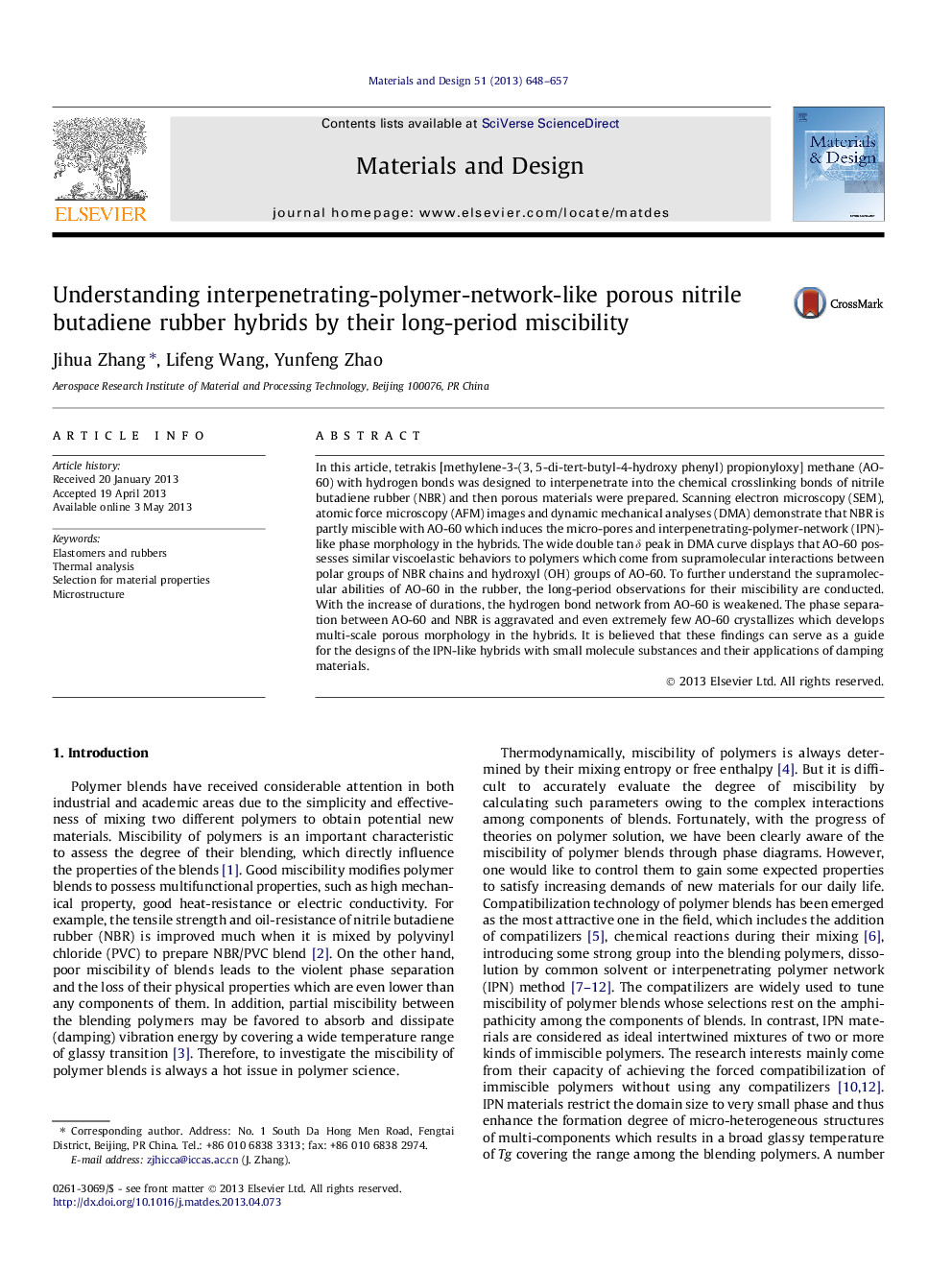| Article ID | Journal | Published Year | Pages | File Type |
|---|---|---|---|---|
| 829884 | Materials & Design (1980-2015) | 2013 | 10 Pages |
•Hydrogen bonds are introduced into NBR to develop its IPN-like porous hybrids.•NBR is partly miscible with AO-60.•AO-60 possesses the viscoelastic behavior resembling that of polymers.•Phase separation aggravates and AO-60 crystallizes in the durations.•The porous hybrids may have potential damping applications.
In this article, tetrakis [methylene-3-(3, 5-di-tert-butyl-4-hydroxy phenyl) propionyloxy] methane (AO-60) with hydrogen bonds was designed to interpenetrate into the chemical crosslinking bonds of nitrile butadiene rubber (NBR) and then porous materials were prepared. Scanning electron microscopy (SEM), atomic force microscopy (AFM) images and dynamic mechanical analyses (DMA) demonstrate that NBR is partly miscible with AO-60 which induces the micro-pores and interpenetrating-polymer-network (IPN)-like phase morphology in the hybrids. The wide double tan δ peak in DMA curve displays that AO-60 possesses similar viscoelastic behaviors to polymers which come from supramolecular interactions between polar groups of NBR chains and hydroxyl (OH) groups of AO-60. To further understand the supramolecular abilities of AO-60 in the rubber, the long-period observations for their miscibility are conducted. With the increase of durations, the hydrogen bond network from AO-60 is weakened. The phase separation between AO-60 and NBR is aggravated and even extremely few AO-60 crystallizes which develops multi-scale porous morphology in the hybrids. It is believed that these findings can serve as a guide for the designs of the IPN-like hybrids with small molecule substances and their applications of damping materials.
